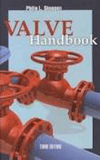The building product manufacturing sector's 2002 prospects for recovery are a little better. The reason is that it has stayed healthy compared to U.S. manufacturing as a whole by riding on the coattails of the thriving construction sector during 2001, and the growth rate for construction built will be flat this year.
Shipments of building products will increase moderately in the year 2002 due to a domestic market that is expected to remain strong, while several important export markets should recover in response to improved U.S. conditions. Since housing starts are expected to decline slightly, shipments of products used chiefly in home building - such as water heaters and plastic pipe - will not experience much change.
The rate of inflation for building products has dropped to near zero in 2002 and should remain flat for the remainder of the year, although some materials have begun to rebound from recent drops.
To help manufacturers escape the recession, Huether called for U.S. leaders to enact policies to help the business climate and to refrain from passing legislation that will increase costs for American businesses.
"Because the recent downturn has been really a business recession - personal consumption has remained surprisingly buoyant since last March - it is important to foster an environment that will foster a turnaround in the business sector of the economy," he said.
A Call For Free Trade
Huether also said NAM supports more free trade agreements. "The argument that free trade has destroyed America's industrial base is just flat wrong," Huether said. "During the past decade, when the economy became much more globalized, U.S. industrial output expanded by 61%, nearly double the growth rates of the past two decades."During the past 15 years, two-way trade (exports plus imports) has grown from 17% to 25% of GDP growth. This globalization has taken place mainly in the manufacturing sector, which accounts for nearly 70% of U.S. trade. NAM is a strong supporter of free trade agreements such as NAFTA and continues to work hard to help pass important legislation such as Trade Promotion Authority that will help break down trade barriers for U.S. exporters.
"The United States already has among the lowest tariff rates on imports of any country in the world, while tariff rates on industrial products, especially in developing nations, remain quite high. Therefore, new trade agreements that lower barriers overseas will strongly benefit America's manufacturers. There are currently more than 100 free trade agreements in the world. The United States is party to only three. It is important that the United States aggressively works to lower trade barriers abroad, which is why NAM supports future efforts such as the Free Trade of the Americas (FTAA) that will tie South American markets to U.S. producers," said Huether.
"This is not to say that free trade has no negative effects on the economy and workers in terms of job dislocations," he continued. "However, free trade also creates many high-paying jobs. So, rather than trying to qualify trade as a 'job destroyer' or 'job creator,' a more accurate assessment of the general impact of trade on the U.S. economy is that it shifts the mix of U.S. production and employment toward high-skilled sectors where the United States has a competitive advantage," Huether told Aylor.
Huether attributed the steady decline in the manufacturing workforce over the past decades to productivity gains in manufacturing, and he pointed out that, adjusting for inflation, manufacturers' share of the economy in 2000 was the same as it was in 1960 - about 17%.
NAM is the nation's largest industrial trade association, representing 14,000 members and 350 member associations serving manufacturers and employees in every industrial sector and all 50 states.





